 |
Border between Ireland and Northern Ireland
|
Today started with crossing the border to Northern Ireland. What border? You might ask. As you can see there is no actual border even though you travel from an EU country to a non-EU country. This is what a soft border means. No passport control and no visible border.
 |
| The shamrock |
Some historical facts that our tour guide was feeding to us on the coach:
- - Celts came to Ireland in 500 BC and formed little kingdoms
- - An example of a Celtic law would be a divorce: A woman could divorce her husband just by saying ’I divorce you’ three times
- - A group of Celts went to England and took slaves among whom there was a young man called Patrick
- -Patrick later returned to convert the Irish into Christianity
- - St Patrick used the shamrock to explain the concept of trinity
- - Shamrock already played a part in the Celtic culture
- - 1801 the Act of Union —> Ireland started to be ruled from Westminster
- - The potato famine (1945-1952) made the Irish see the indifference of Westminster to their plight
- - The Irish started to want home rule
- - The Easter rising in 1916 was the start of the movement to gain home rule/independence. However, 16 leaders were rounded up and taken away and 14 of them were executed by Brits making them martyrs
- - The declaration of Irish State in 1919
- - The war of independence 1919-1921
- - Ira realised they couldn’t fight the British army by force
- - 1921 the British government was ready to negotiate, Anglo-Irish Treaty
- - The majority of the northern parts was Protestant and wanted to be part of Britain
- - Irish free state (1922-1937) was formed, they still were part of the British Empire
- - 1922-1923 was another civil war to gain full independence, consolidated the position of the Northern parts in Ireland
- - the declaration of the Republic of Ireland in 1949
- - In the 1950s Northern Ireland was economically depressed
- - in the 1960s the civil rights movement gained momentum in Northern Ireland as a small Protestant family was favoured and given a house instead of a big Catholic family
- - The Troubles started 1969 —> lasted 27 years, 3700 people died
- - People became immune to the violence
- - 1998 the peace agreement was signed - The Good Friday agreement
- - The border was removed
- - The economy started to develop
- - Brexit happened, Northern Ireland felt Britain didn’t care
- - The Good Friday Agreement demands that there are no border controls
- - The Northern Ireland protocol means the border is in the Irish Sea
- - The renegotiation agreement of the protocol was turned down only recently
- - The guide claimed there might be a referendum on uniting Ireland in 5-10 years
Belfast and Northern Ireland
- - What still makes things difficult is that Belfast schools are separated according to religion
- - Most people in Belfast don’t care who they live next to, but some areas are still separated
- - A joke exemplies the dilemma: A man walks on a street. People ask him which religion are you? The man says: Jewish. They ask: a Catholic Jew or a Protestant Jew?
- - the Troubles started in 1969; houses were smashed, people lost their lives, people lived in the middle of terror, many were imprisoned
- - at first prisoners were not given the status of a political prisoner —> prisoners protested by not wearing prison clothes —> They didn’t wear more than blankets for 5 years (cf. Blanket man, Blanket protest)







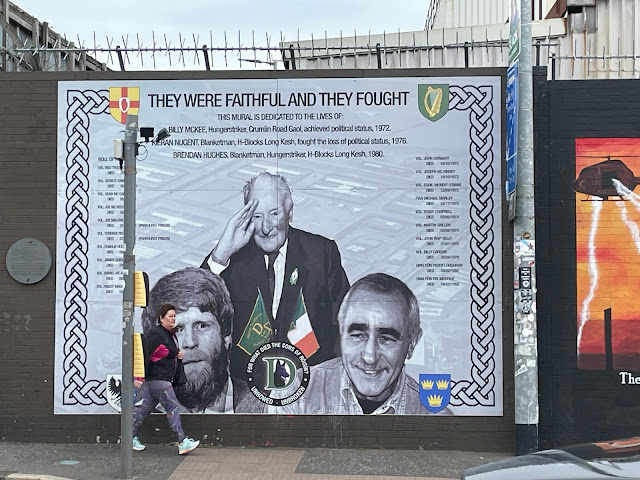


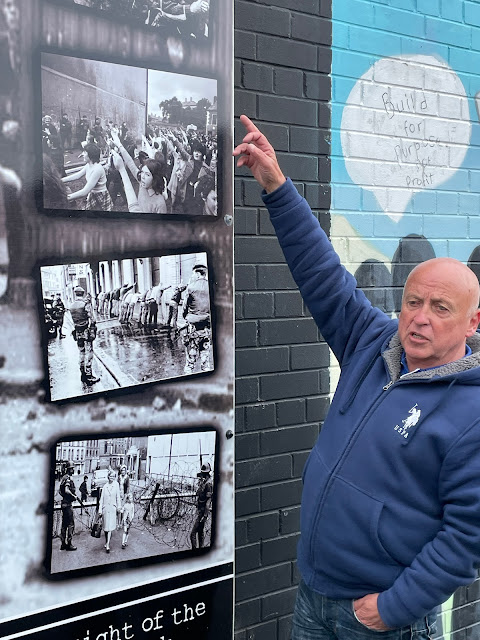






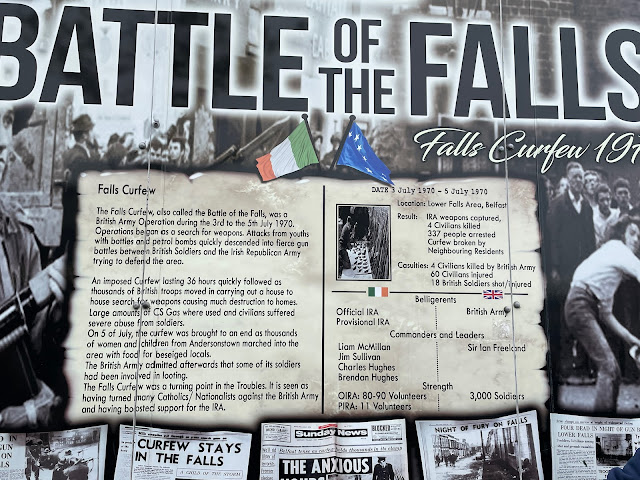



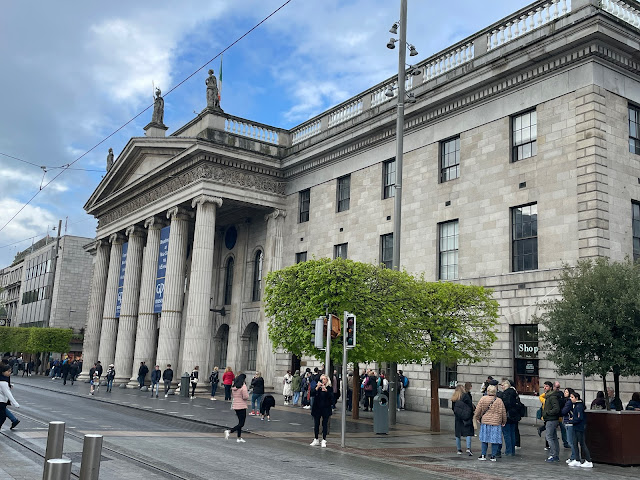
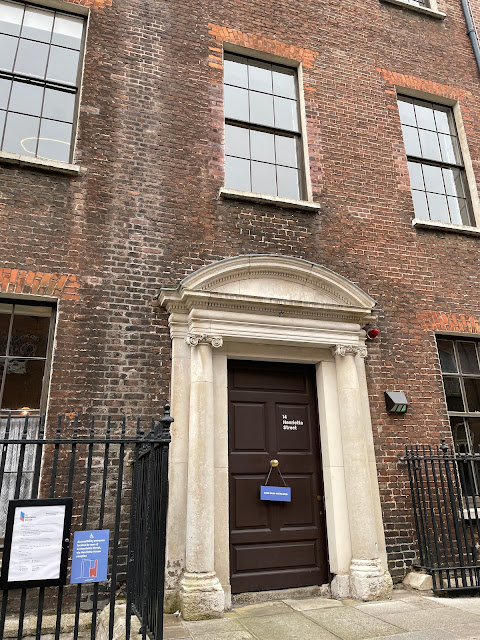
Kommentit
Lähetä kommentti